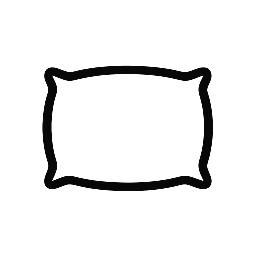Jakarta is no stranger to flooding, but recent heavy rainfall has once again brought the city’s drainage issues into sharp focus. As water levels rose, several major roads in West and Central Jakarta were submerged, causing significant inconveniences for commuters and reigniting discussions about the need for better infrastructure and more efficient drainage systems. This article delves into the details of these events and explores potential solutions to mitigate future flooding.
The Extent of the Flooding
Following a torrential downpour, water levels on several key roads in both West and Central Jakarta reached alarming heights, with some areas experiencing floods as deep as 70 centimeters. These inundated roads, which are crucial for the daily commutes of thousands of residents, quickly became impassable, leading to traffic jams and stranded vehicles.
One of the most affected areas was Jalan Daan Mogot in West Jakarta, where the rainwater accumulated rapidly, turning the road into a virtual river. Similarly, Jalan Letjen S. Parman, another major artery in the city, saw significant flooding, disrupting both private and public transportation. In Central Jakarta, Jalan Thamrin and Jalan Sudirman, two of the main thoroughfares, also fell victim to the heavy rains, highlighting the widespread nature of the problem.
Underlying Causes: Drainage Issues
The frequent flooding in Jakarta can be attributed to systemic issues with the city’s drainage system. Jakarta’s rapid urbanization over the past few decades has outpaced the development of its infrastructure. With more buildings and less permeable ground, rainwater has fewer places to go, leading to quicker and more severe flooding.
Moreover, the existing drainage systems are often clogged with garbage and debris, further hampering their effectiveness. The combination of inadequate infrastructure and poor maintenance means that even moderate rainfall can result in significant flooding, let alone the heavy rains that recently struck the city.
Impact on Daily Life
The impact of the flooding was felt keenly by residents and businesses. Commuters faced lengthy delays, with many being forced to abandon their vehicles and seek alternative routes or modes of transport. Public transportation systems, including buses and commuter trains, were thrown into disarray, leading to overcrowded stations and frustrated passengers.
For businesses located along the flooded roads, the situation was equally dire. Shops and restaurants had to close temporarily, leading to lost revenue and damaged goods. For many small business owners, who rely on daily income, the financial hit was significant.
Seeking Solutions
Addressing Jakarta’s flooding issue requires a multifaceted approach. Improving the city’s drainage infrastructure is an essential first step. This involves not only expanding the capacity of the drainage systems but also ensuring regular maintenance to prevent blockages. Investments in green infrastructure, such as parks and green roofs, can also help absorb rainwater and reduce runoff.
Public awareness campaigns are crucial in encouraging responsible disposal of waste, which can significantly reduce the amount of garbage clogging the drains. Additionally, urban planning must take into account the natural waterways and the importance of preserving open spaces to allow for proper water absorption.
Long-term planning and cooperation between government agencies, private sectors, and the community are vital. Initiatives like the Banjir69 project, which focuses on comprehensive flood management strategies, could provide meaningful solutions if implemented effectively. Banjir69 login systems for real-time data monitoring and alerts could also help residents prepare and respond better during heavy rains.
Conclusion
The flooding of major roads in West and Central Jakarta following heavy rains is a stark reminder of the city’s ongoing challenges with its drainage system. While immediate relief efforts are essential, it is clear that long-term, sustainable solutions are needed to address the root causes of the problem. By investing in better infrastructure, promoting responsible waste disposal, and embracing innovative technologies, Jakarta can hope to mitigate the impacts of flooding and improve the resilience of its urban environment for the future.

Leave a Reply